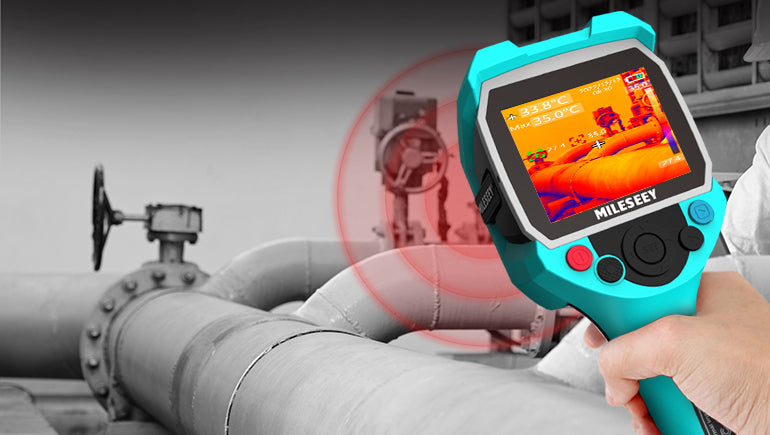Why Timely Water Leak Detection is Necessary for Keeping a Healthy And Balanced Home
Ingenious Solutions for Very Early Detection of Water Leaks in Buildings and Framework
From sophisticated leakage discovery technologies to the implementation of IoT sensing units for real-time monitoring, the landscape of leak avoidance is progressing quickly. Automated water flow analysis systems are improving just how leaks are identified and attended to, paving the method for a positive method to water leak detection.
Advanced Leakage Discovery Technologies
Advanced leak discovery modern technologies, furnished with advanced sensing units and algorithms, play an important role in swiftly recognizing and determining water leaks in various setups. These innovations utilize a combination of acoustic, thermal, and electromagnetic picking up methods to spot leakages properly. Acoustic sensors identify the noise of running away water, enabling specific localization of the leak source. Thermal imaging finds temperature level adjustments triggered by water leak, giving one more reliable technique for leakage identification. Electro-magnetic sensing units can determine changes in magnetic fields triggered by water, supplying yet an additional layer of leakage discovery ability.

IoT Sensors for Real-Time Surveillance
In the realm of contemporary water leak discovery, the assimilation of IoT sensors for real-time tracking represents a critical improvement in boosting aggressive leakage detection capabilities. These sensing units supply continuous monitoring of water systems, supplying real-time information on water circulation prices, stress variations, and temperature level changes. By leveraging IoT innovation, these sensors can find also the tiniest abnormalities in water usage patterns, allowing early identification of prospective leaks before they escalate into major issues.
IoT sensors transmit data to a central system, where innovative formulas evaluate the details and create signals or alerts when abnormalities are found. This real-time tracking ability allows homeowner or facility managers to promptly resolve leakages, lessening water damage, reducing fixing expenses, and conserving water sources.
In addition, IoT sensing units can be integrated with structure administration systems, permitting automated responses to detected leakages, such as turning off water shutoffs or triggering pumps to reduce the impact of leakages. Overall, the implementation of IoT sensors for real-time surveillance substantially enhances the performance and efficiency of water leak discovery in buildings and facilities.
Device Understanding Algorithms for Leak Forecast

One trick advantage of using equipment discovering for leak prediction is its capacity to constantly find out and enhance its accuracy with time. As more information is collected and fed right into the algorithm, it can improve its predictions and adjust to altering problems, eventually increasing the integrity of leakage detection systems.
Additionally, device understanding algorithms can aid in determining refined signs of leaks that might go unnoticed by typical tracking approaches. water leak detection. By evaluating intricate data embed in real-time, these algorithms can give early cautions and alerts, permitting punctual intervention and preventative maintenance to mitigate prospective water damages and associated expenses
Making Use Of Thermal Imaging for Leak Detection
Thermal imaging technology provides an encouraging technique for finding water leakages in various systems and infrastructures. By using infrared radiation and temperature differences, thermal imaging electronic cameras can identify surprise leaks that are not easily noticeable to the nude eye.
One of the essential benefits of thermal imaging for leakage detection is its non-intrusive nature. Unlike typical techniques that may call for getting into walls or floors to find leaks, thermal imaging permits non-destructive testing. This not just conserves time and decreases costs but likewise lessens interruption to the building or infrastructure being assessed. Additionally, thermal imaging can promptly check big areas, giving a thorough review of prospective leak resources in a prompt way. Overall, using thermal imaging modern technology improves the efficiency and precision of water leak detection, making it a beneficial device for maintaining the honesty of structures and infrastructures.
Automated Water Circulation Analysis Equipments
Exactly how can automated water circulation analysis systems change the detection and monitoring of leaks in different systems and infrastructures? Automated water circulation evaluation systems provide an aggressive method to leakage detection by constantly keeping go to this site track of water circulation rates and patterns. By developing standard information, these systems can rapidly recognize deviations that may show a leak, allowing punctual intervention to stop considerable damage.
These systems utilize Visit Your URL advanced formulas to assess real-time data and offer prompt alerts when abnormalities are discovered, enabling swift action to be taken. Additionally, computerized water circulation analysis systems can be incorporated with building administration systems or IoT systems, enhancing overall effectiveness and making it possible for remote tracking capacities.
In addition, the information collected by these systems can be made use of for anticipating maintenance functions, assisting to determine prospective weak points in the infrastructure before leakages take place. On the whole, the execution of computerized water circulation analysis systems can considerably improve leak discovery and monitoring techniques, eventually causing cost savings, lowered water wastefulness, and boosted sustainability in buildings and infrastructure.

Final Thought
To conclude, the assimilation of innovative leakage discovery technologies, IoT sensors, artificial intelligence algorithms, thermal imaging, and automatic water flow analysis systems provides cutting-edge options for very early discovery of water leakages in structures and infrastructure. These technologies allow real-time surveillance, forecast of leaks, and effective detection methods to avoid water damage and wastage. Implementing these remedies can aid in maintaining the honesty and sustainability of water supply in different settings.